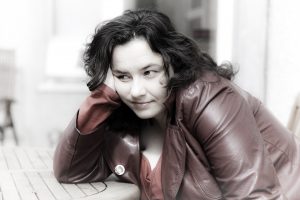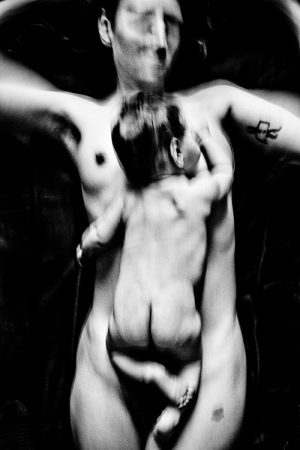
“The personal is political,” proclaimed the new women’s movement – and women wanted to prove this claim by turning their lives into a “happening”. This was far more radical than most feminists realised. Did women really want everything personal to become public and political?
Ten years later, daughters of the liberated mothers began recounting their own experiences of growing up as participants in their parents’ radical experiments. In Norway, they speak of literature’s re-evaluation of the family, and in particular a re-evaluation of the idealised mother, often toasted as “the cornerstone of the family”. Writers such as Trude Marstein, Anne Oterholm and Hanne Ørstavik have had much to say about the joys of liberty.
The relationship to the family, the mother, and to womanhood constitute the first of two main themes in the works of Auður Jónsdóttir (b. 1973). The second theme is the relationship between the Western master races and the emerging international working classes in the new millennium. While seemingly unrelated, these two themes have much more in common than one may initially think.
There Was a Small Village in Western Iceland…
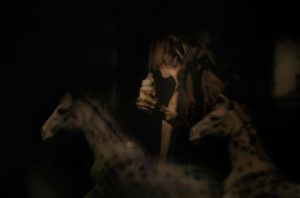
Jóndóttir’s first book, Stjórnlaus lukka (1998; Bliss), recounts the story of an eighteen-year-old girl who lives in a small village in Western Iceland. Her alcoholic, ex-hippie mother works as a housekeeper for an old farmer and his malicious son. The girl works in a fish factory. Life in the village is monotonous. Everybody scrutinises everyone else’s slightest move, suspecting everybody else of adultery, a mostly justified suspicion. Drugs and alcohol are used and abused, people are bored. Everyone dreams of moving to the South. When the mother’s new partner dies, mother and daughter relocate to Reykjavik.
Bliss is a mature debut novel. It describes an Icelandic fishing village in few, but concise words: the fishing boats, the refrigeration factory, the supermarket, the local bank. Social life in the village is governed by hierarchies, and villagers of all ages have few qualms about creating a scene, naming and shaming each other in public. The future holds little promise, but the villagers stand together, when the village equilibrium is under threat. This forms the backdrop to the main theme of the novel, i.e. the mother-daughter conflict, which assumes crucial importance since the daughter is very dependent on her mother.
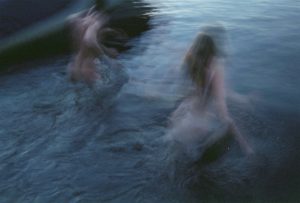
The mother does not get along with the other villagers. Instead, she draws a circle around herself and the drinking buddies who come to visit her on the farm. The farm is her own world where she controls everything and lays down the law in an unpredictable and arbitrary manner. The only thing of importance to the daughter is her mother’s love, which becomes highly unreliable when the mother is drunk. The mother, likewise, is dependent on the daughter’s eternal admiration of her.
The daughter suffers from epilepsy. Throughout history, this disease has wrought fear and respect as epileptics pass out, they abandon this world – but where to? To heaven? Or hell? The farmer’s son calls the girl a “freak”, and his harassment makes her even more dependent on her mother’s protection. Towards the end of the novel, the mother finds a lover. The daughter becomes jealous and angry and verbally attacks her mother, something which always leaves her remorseful.
Matrophobia
Adrienne Rich introduced the term “matrophobia” in 1976 to describe the vulnerable relationship between daughters and mothers. The term refers to a daughter’s anxieties towards her mother, the fear of turning into the mother, of becoming like her. A mother’s life is characterised by so many compromises and internal conflicts that daughters refuse to follow in their mother’s footsteps. Many psychoanalysts have observed that daughters have problems detaching themselves from their mothers, and the boundaries between the two are often vague or blurred.
According to Astrid Henry, third-wave feminists are not interested in the calls for sisterhood advocated by second-wave feminists. The young women who are representative of the third wave, were all born between 1965 and 1980 and belong to the so-called “Generation X”. They grew up with feminism and do not know a world without feminism. They see no need for consciousness-raising groups or activism relating to a cause, which has already been acknowledged, recognised, and institutionalised.
These women grew up in a society where capitalism has triumphed, where class is often considered a thing of the past, and where solidarity matters among friends – not strangers. They are feminists, inasmuch as they want women to be free to choose whatever makes them happy as individuals. Attitudes towards sex play a major role in this respect. These young feminists are indeed their mothers’ daughters, but the mother is no longer a visibly repressed and powerless creature, she is rather demanding, selfish, and possibly more of a child than her own daughter.
According to Phyllis Chesler, criticism of and opposition to feminism may be conflated with the daughters’ problems with their mothers. While the daughters are still matrophobic, the imperious and minacious mother they cut off is not always the mother as such, but rather the second-wave feminism advocated by their mothers and representative of their generation. Feminism is described as aggressive, unreasonable, frigid and frustrated, hostile to men, and utterly unsexy. Such an understanding of feminism, makes it is easy to reject feminism – as well as the mother – with the claim that they are impeding the freedom of the daughter.
In the autofiction and autobiographical novels of the last decade of the 20th Century, young writers describe the – often pronounced, negative – impact of their mothers. The mothers let their daughters down in various ways, they are described as strong in their weaknesses, as losers and addicts, sentimental and unhinged. The daughters describe their mothers as either angels or demons; they have the power to bring them to life in their writing, becoming authors of or giving birth to their mothers in a textual context. Some use their new powers to metaphorically kill off their mother, others use their writing to detach themselves from their mother and putting her in her place, while some declare their love to their mother. Auður Jónsdóttir does all of these things in her own explorations of the mother-daughter relationship.
Memories and Images
Guðrún Eva Mínervudóttir (b. 1976) also writes about the mother-daughter relationship in her book Albúm (2006; Album). The book consists of 99 short texts and an equal number of images from the author’s life, the accounts are very simple at first, becoming subsequently more complex and complicated. As the narrator ages, one gets the impression that more and more is being left unsaid. The reader is offered brief glimpses of the mother’s neglect of her children as she continues to move from one place to another, leaving the children bereft of friendships, developing bonds to places rather than people during their childhood. Guðrún Eva Mínervudóttir is a philosophical writer who probes deep into her themes: the meaning of pain (2005; Yosoy), pornography and anorexia (Skaparinn, 2008; The Creator), and the primordial force, creation, and destruction (Allt með kossi vekur, 2011; Everything is Woken with a Kiss).
The novel Sólskinshestur (2005; Sunshine Horses), which Steinunn Sigurðardóttir (b. 1950) has described in an interview as the most difficult she has ever written, portrays two siblings who grow up with the almost complete indifference of their parents. Both parents are well-educated physicians, respected members of the community. While the daughter is left to bring up her younger brother, during dinner, the parents exchange stories of children they have operated on and saved at work during the day. They are socialist, idealist physicians, deeply committed to children’s causes yet lacking in interest in their own children. The various time frames of the novel revolve around the family home, which becomes a sort of “house of horrors” full of all kinds of ghosts.
Karitas, the artist in the novels, Karitas án titils (2004; Karitas Untitled) and Karitas: óreiða á striga (2007; Karitas: Chaos on Canvas), by Kristin Marja Baldursdóttir (b. 1949), also has to choose between art or her family. Karitas is as old as the 20th Century, her story is the art history of the century, a tale of creativity and destruction, the hunger for love, and the yearning for inner peace. The books are brilliantly written and have a devoted readership in numerous countries.
The People in the Basement
In Auður Jónsdóttir’s novel Fólkið í kjallaranum (2004; The People in the Basement), the majority of events play out in the past. The young yuppie protagonists, Klara and her husband Svenni, receive guests, Klara´s grandmother telephones a few times, her drunken parents turn up out of the blue, the man in the basement complains about the noise, Klara’s sister is in an accident. As in the plays of Henrik Ibsen, the events unfolding on stage are only important because of what has already happened before, thus allowing a dialogue with the past to take place. The past is like a minefield across which Klara must manoeuvre – a challenge requiring all of her energy.
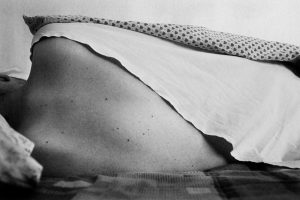
In the first chapter of the novel, Klara is in a supermarket where, due to her anxiety, she is incapable of choosing between one item and the other. The anxiety catapults her back to a traumatic childhood memory from the time she was 10 years old and she went camping with her best friend, their parents, and siblings. After a long night of heavy drinking, Klara’s mother drives the family car into the river in a fit of jealousy and rage. The children wake up due to the commotion and watch the rescue attempts paralysed by terror because they believe Klara’s mother is drowning.
This banal yet highly traumatic scene stands as a mise-en-abîme of the parent‘s melodramatic marriage. They are alcoholics of the 1968 generation, an academic and an artist respectively, and their lives are defined by parties, rows, fights, suicide threats, infidelity, destruction, and chaos. From time to time, they make up for their partying by taking the children on holidays to the south, mountain hikes, entertaining them with literature and music, playing and fun, love and cosy family nights at home – all of which the children love, despite being uncertain of whether their experience is real or not. The elder sister, Klara, supresses much anger and harbours an overwhelming sense of guilt.
Fjóla is Klara’s best friend. They are inseparable, sharing everything, and Fjóla is always there for Klara when she is bullied at school. The two girls are quite different from one another. While Fjóla’s petite-bourgeoisie parents believe that anyone, who does not share their opinions and views, is a fool, Klara’s parents are bohemians, who believe that everyone has a right to believe what they want, yet deep down they believe that anyone, who is not a socialist and a humanist, is a fool. Absurdly, Klara’s parent’s self-delusions become her moral guidelines and she has difficulties accepting Fjola’s absolute lack of social tolerance. Similarly, Klara does not understand how her friend, from an early age, has been sexualised and fetishised, finding herself caught in a beauty trap, she despises. They drift apart as teenagers, they are no longer best friends, they compete for the same boys, and Fjóla is the prettier of the two.
When reading The People in the Basement, we see how the co-dependency portrayed through repetitions and reflections forms the structure of the story. None of the women of the novel stand up for one another. While Klara and her husband belong to the young, upwardly mobile middle class, Fjóla becomes a single working mother, abusing drugs and alcohol, and losing custody of her child. The mysterious, fat homeless woman, who visits the aggressive man in the basement – where they drink, fight, and have sex – turns out to be Fjóla. She is so full of self-loathing that she never contacts her childhood friend, Klara, living on ground floor.
At the outset of the novel, the young woman in the basement has just committed suicide. If the basement symbolises the subconscious of the middle class, then Klara’s rejection of Fjóla constitutes a part of this unconsciousness.
Trauma
When Bliss was shortlisted for the Icelandic Literature Award, some critics suggested that Auður Jónsdóttir’s novel had only been chosen because it was the literary debut of Icelandic Nobel Prize winner, Halldór Laxness’, grandchild. However, such sentiments were neither opined when, seven years later, The People in the Basement was shortlisted for the Nordic Council‘s Literature Prize, nor upon publication of Auður Jónsdóttir’s latest novel Ósjálfrátt (2013; Secretaries to the Spirits), which includes a metadiscourse on the issue of using one‘s own or other well-known person‘s lives in literature.
In the first scene of the novel, the grandmother and mother of the protagonist Eyja (a derivative of ‘Auja’ from the name ‘Auður’) convince her to move to Sweden in order to realise her dream of becoming a writer, thus ending the marriage to a man she wed a few years before in order to spite her mother. At the time, Eyja was 20 years old and had repeatedly dropped out of high school, working sporadically in a small village in western Iceland. Her husband, twenty years her senior, is wise but a drunk, he is a former seaman whose raw charisma poses a great attraction to Eyja.
A friend who was born in the village had originally suggested that Eyja come to the village, too. While her friend moves south to attend university, Eyja remains in the village. One spring, there is an avalanche from the steep mountainsides above the village, and twenty people lose their lives, all buried alive. In the aftermath of such disasters, a unique form of solidarity emerges in small communities. People embrace and support each other as much as they possibly can, though ¬– in reality ¬– everybody finds it impossible to go on living, unable to make peace with the disaster that has occurred.
Natural disasters constitute collective traumas, which contribute to a silencing of the individual narrative, as the entire community is traumatised and mourns its dead, somehow not a single personal tragedy surpasses the tragedy of others. Eyja knows, for example, that her husband took part in the rescue mission in the aftermath of the avalanche, when there was still hope of retrieving survivors, she, however, does not realise the extent of his experiences.
A long while after their divorce, Eyja learns that her ex-husband had become severely depressed in the aftermath of that night. He had encountered a child’s hand protruding from the snow, but grasping to take hold of it, he realised that the hand was severed from the child to whom it had belonged. In the village, such grotesque stories remain unspoken of. A paralysing grief settles over the community, and those – like Eyja – who did not lose loved ones, experience an inability to express compassion towards the other survivors, their empathy seemingly coming across as illegitimate and sincere. The unresolved trauma thus explains the apparent meaninglessness and absurdities in the small town.
Writing Away the Anger and Writing Oneself a Child
Eyja’s mother and grandmother continue to criticise her for being too big and bloated and for letting herself go. They pick on her, taunt her, and simply cannot abide by her looks – sentiments shared by Eyja. As a young girl, one of Eyja’s mother’s friends had commented she looked like Bibendum, the Michelin Man, with the face of the Virgin Mary.
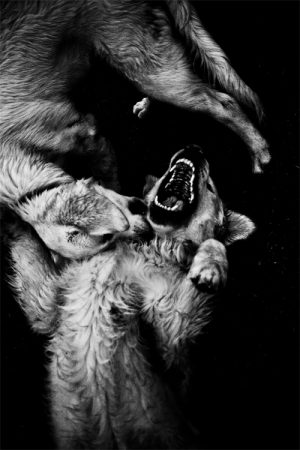
Large female bodies divulge their owner’s hunger and lack of self-control. Beverly Skeggs suggests that the middle classes define individuals or groups as “too” big, disgusting, and immoral in order to accentuate their own position on the right side of the class divide. A lack of morals and judgement goes hand in hand with a failing logic and stupidity – all embodied, according to Skeggs, by the working-class, single mother.
While Eyja is not a mother, the persistent criticism of her body and appearance, she has endured from her own mother and grandmother, the childhood bullying, and always being told off for not living up to other people’s expectations, contribute to her low self-esteem, which in turn confirms her weaknesses, passivity, and confusion. Being plump has always been associated with the flesh, the body, and sex, as a sign of excess and immorality. The reader sees this clearly when, during one of Eyja’s frequent confrontations with her mother, Eyja hisses, that – at least – she has more frequent and better orgasms.
Yet the issue of being overweight is also associated with the lack of willpower and ambition, something the middle classes cannot abide by, because they both act as fuel for the staunch middle-class belief in social mobility. This belief is founded upon ambition and discipline, manifest in the supple, fit bodies of women who count calories and congregate at the gym.
Since she was a child, Eyja has dreamed of writing. Being the granddaughter of Iceland’s most famous writer has made her struggle for recognition relatively harder. Making matters worse, her mother is a well-known newspaper columnist – a brilliant, witty, and self-assured writer, who, everyone agrees, “takes after her father”. Eyja recognizes the tremendous importance of writing in her mother’s life, and she is aware that, inherently, comparisons between the two will be made. She, nevertheless, embarks upon a career as a columnist.
Having started writing, she finds she can do nothing else. The chapter which details her debut as a writer is entitled “Móðurmorð” (“Matricide”). Having power over words, having the power to create reality through language, to interpret one’s self rather than leaving it in the hands of others, has an empowering effect, and during her stay in Sweden, Eyja gives birth to herself as a writer. Her mother, on the other hand, does not write another word after her daughter’s debut. She encourages her daughter to continue writing. She avidly follows her daughter’s work, provides constructive criticism, and encourages her not to let consideration for others override the instinct for good material. Yet Eyja will never be able to know for certain, why her mother gave up her own writing.
The mother-daughter conflict described in Secretaries to the Spirits is reminiscent of primordial forces, and the greatness and power of the evil mothers of myths and legends. The literary and fantasy connection is a leitmotif within the novel, which pays homage to the art of the written word. Through her writing, Eyja reconciles herself with her sexuality and mother-role, and she is writing herself the child, she never imagined conceiving.
A Miracle
A young deaf-mute boy is left in the care of a woman in Reykjavik. The woman, who works as a proofreader, is at a loss as to what to do with the child, and having very recently divorced from her adulterous ex-husband, she decides to take the boy with her on a road trip to Eastern Iceland. The ensuing journey is described as an inner and outer journey that is fun and adventurous, a study of the role, trust and hope plays in our lives. The novel, Rigning í nóvember (2004; Butterflies in November), is Auður Ava Ólafsdóttir’s second book. Ólafsdóttir is an assistant professor of art history and her novels are characterised by their simple, yet highly sophisticated, sense of colour, form, and style, which exudes warmth and sensuality.
In the novel, Afleggjarinn (2007; The Greenhouse), the reader is presented with another sensitive relationship between a child and an adult. Here, too, the child is left in someone else’s care, namely in the care of the male protagonist Arnljótur. Here, however, the child is his own daughter. Arnljótur has set himself the task of planting a cutting of a variety of eight-petal rose once cultivated by his mother. She was killed in a car crash, and Arnljótur is determined to plant his cutting in the most beautiful rose garden in the world, located in a monastery in southern Europe. After a long journey, he arrives at his destination only to discover that the garden has gone to seed due to neglect. Arnljótur makes it his goal to restore it. A woman, the mother of his daughter, arrives in the village with the daughter, who Arnljótur has never seen before. The girl was conceived two years earlier, during a night in a greenhouse following a ball. Arnljótur now has to get to know his daughter. The mother soon moves on, leaving the daughter with Arnljótur. He takes his daughter along to the rose garden. Day by day, the garden is slowly restored to its former glory, the complex design, and the floral splendour, where the small Icelandic cutting has found its home. The girl soon endears herself to the monks of the monastery, and thanks to her strong charisma, the women in the village believe her capable of performing miracles. The Greenhouse is has won numerous literary awards. Beneath the uncomplicated surface of the novel, lies a web of religious references and its lucid humanism has a strong effect on the reader.
Life As an Immigrant
For a long time, Iceland has had some of the strictest immigration laws in the world, and while, for the past thirty years, the other Nordic countries allowed immigration and family reunification, Icelandic society has remained a noticeably homogenous society. During the past decade, the situation has changed – a change, also reflected in Icelandic literature. Auður Jónsdóttir was one of the first writers to concern herself with the realities of Icelanders from other cultural backgrounds and ethnicities. The main character in Bliss works in a fish factory in a small Icelandic town. Her colleagues are either seasonal workers or immigrants who have settled in the small coastal town – e.g. Poles, Czechs, and Thai. These people are a testament to Max Frisch’s dictum: “Man hat Arbeitskräfte gerufen, und es kamen Menschen” – “We called for labourers, and human beings answered our call.”
In the novel Annað líf (2000; A Different Life) the protagonist is a young Thai woman, Napassorn, who has come to Iceland to work as a housekeeper for an older man in Reykjavik. While she presumes it is her duty to have sex with the man, he believes to have merely hired a replacement for his ageing Icelandic mother. Things do not progress well – Napassorn is lonely, unhappy, and alienated in this cold and strange town, and the man is too frustrated and confused to handle the situation well. The book concludes with the young woman’s return to Thailand.
Thai women in Iceland were displeased with the portrayal of Napassorn. They found the character based on stereotypical assumptions concerning Asian women – not least due to Napassorn not being a “nice girl”. In Thailand, having supported herself and her family through prostitution, she had become addicted to drugs and the associated lifestyle. Icelanders treat her with either indifference or as a nuisance worthy of racist comments. In contrast to Napassorn’s friend who encouraged her to come to Iceland in the first place, Napassorn is unable to turn a blind eye to the indifference and racism, nor can she accept the foreign culture she finds herself surrounded by, and she can never be happy with the man with whom she shares a house.
Chakravorty Spivak poses the question: “Can the subaltern speak?”, and discussions of A Different Life revolved more around the question of who may speak for those who remain voiceless in society rather than issues pertaining to the novel’s literary representation.
In the following book, Auður Jónsdóttir delves deeper into this specific question.
Tryggðarpantur (2006; Deposit) introduces us to a wealthy woman, Gisella, who decides to finance her affluent lifestyle by sub-letting three rooms in her flat to immigrant women. In Gisella’s own mind, she is culturally open and liberal, but as the story unfolds, we see that this is pure self-delusion.
In the beginning, Gisella declares that the four women shall all be friends and trust one another. However, being unable to understand her lodgers’ conversations among themselves, she quickly becomes suspicious, then anxious about the situation. She tries to control the situation by introducing new house rules. Her rules are similar to the Seven Commandments in George Orwell’s Animal Farm, adapted solely to suit Gisella’s own personal psychological and economic interests. Animal metaphors, particularly metaphors involving birds of prey and predatory animals, appear often throughout the novel. Auður Jónsdóttir stated in an interview, that we would all turn into animals if we were to lose our humanism.
Deposit is a novel about a wealthy Western society, which extols globalisation as long as remains profitable. The conflicts erupting between the women revolve around class, cultural and psychological power-struggles, in which positions constantly change, and the conclusion of the novel is atrocious. As a politically charged book, Deposit has left readers either pleased or outraged.
The novel Vetrarsól (2008; Wintersun) recounts a story through two different time frames. In the present, a nice and amicable woman works in a publishing company after having studied literature and Spanish in Barcelona. Secrets are buried deep here, in the most literal sense. Partway through, the novel evolves into a crime story about the illegal organ trade – from refugees “no-one will miss.” As the narrative develops, the many threads of the novel are woven together. While Wintersun is certainly an entertaining novel, it does perhaps lack the pure political focus of Deposit.
In addition to writing six novels, Auður Jónsdóttir is a politically engaged commentator on topics such as feminism, globalisation, immigration, and the West’s arrogant attitude towards non-Western cultures – cultures they claim to respect, while in reality keeping them at an unsympathetic distance. Lately, she has criticised how the media conceals ethnocentrism behind a veil of humour and irony – thereby trivialising serious abuses of human rights, ideas, and communities – and portrays political assailants and their targets as equals, thus effectively banishing political critique from public debate.
– – –
Published december 2014



